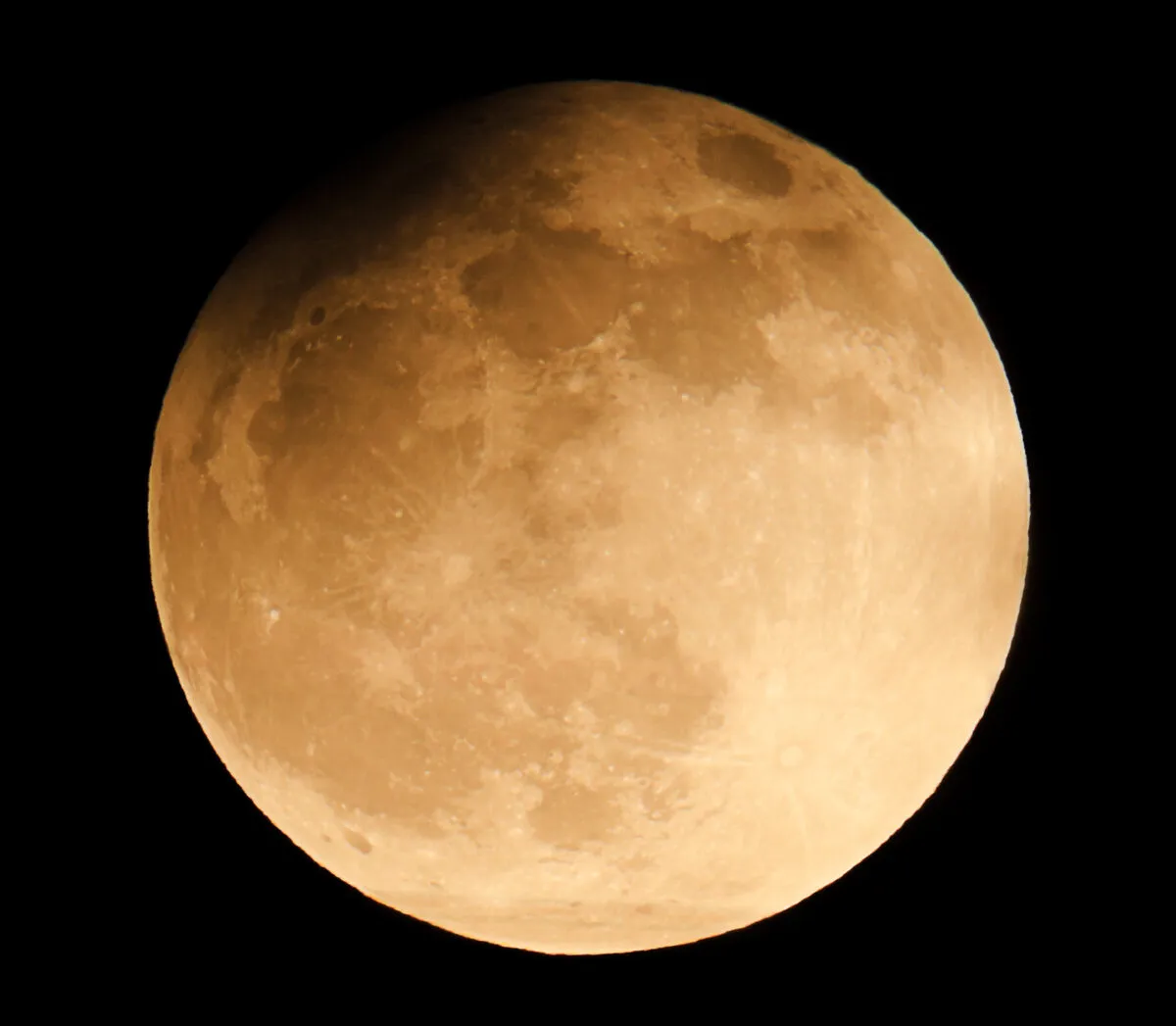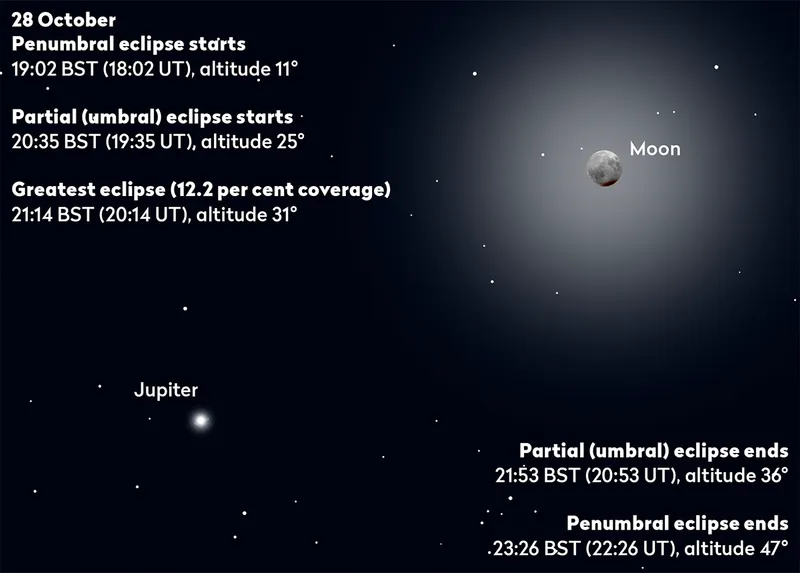In this guide we'll reveal how to photograph the 28 October partial lunar eclipse and capture colours in the shadow.
If it’s clear on 28 October, from the UK we’ll be able to see a slender portion of the Moon’s disc covered by the darkest, umbral, portion of Earth’s shadow.
The effects of this partial lunar eclipse may be tricky to observe with the naked eye, but capturing a photograph of it is a good way ti take advantage of the event.
Both the umbral shadow and the penumbral shadow contain colour, but the presence of the bright lunar surface makes this nigh on impossible to see and very hard to photograph.
Find out when the next eclipse is taking place

Things to consider
If you are attempting to photograph the 28 October partial lunar eclipse, there are a few things to think about as you plan your capture.
A total eclipse of the Moon is typically quite colourful. What you would expect to be a totally dark shadow of Earth is infilled with light refracted through our planet’s thin skin of atmosphere.
This not only brings light to the otherwise dark shadow, but it also brings colour from what is essentially a continuous ring of sunrise and sunset as seen from the vantage point of the Moon.
The red colouration is obvious when the Moon is completely covered by Earth’s shadow, but can it be seen or photographed during a partial eclipse?

An additional difficulty comes from the colour itself, which can vary quite a lot between eclipses.
A dark eclipse can become a deep, ruddy, brown colour, which makes the Moon quite hard to see against a dark sky.
A light eclipse, on the other hand, may appear a bright coppery colour.
The variation occurs due to the amount of cloud present in the thin layer of Earth’s atmosphere that light has to pass through during the eclipse.
Read our guides on how to photograph a lunar eclipse, how to photograph the Moon and how to photograph the Moon with a smartphone camera.

Photographing the eclipse: tech and specs
A camera is the best way to record the colour of the partial lunar eclipse, but you’ll have to work at producing a high-dynamic-range (HDR) image.
This can be produced either with a colour camera or a monochrome camera with switchable red, green and blue (RGB) filters.
If you have both, the mono camera can be used to capture the luminance or tonal aspect of the eclipse, the colour camera being used to record the colour information.
A pseudo luminance can be created by using the colour camera to capture an image, subsequently using your graphics editor to convert it to greyscale.

Using a layer-based editor, carefully align images and, with the greyscale image on top, set its blend mode to luminance.
The beauty of this challenge is that once you’ve grabbed the exposures required, you can take your time to create a composed HDR image that hopefully looks natural and brings out the colourful beauty of this small but exciting eclipse.
It should certainly be possible to extract the umbra’s colour, but can you pick out any banding in the adjacent penumbra?
If you do manage to photograph the lunar eclipse, don't forget to send us your images!
This article appeared in the October 2023 issue of BBC Sky at Night Magazine.

